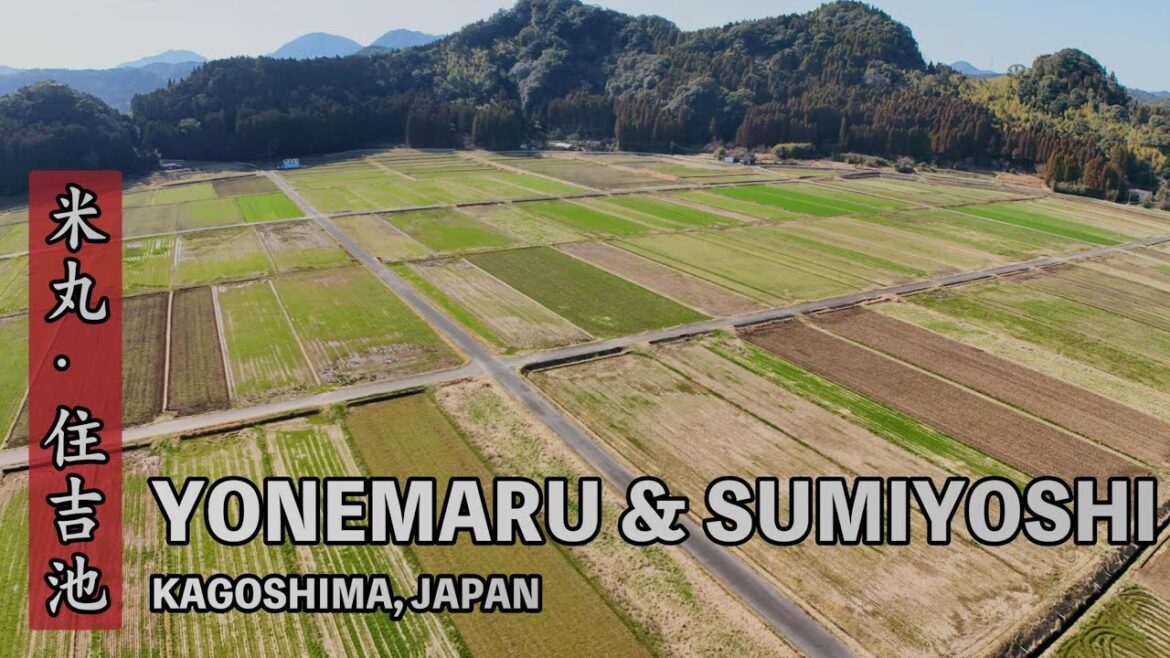Yonemaru & Sumiyoshi 米丸・住吉池 – Kagoshima – 3/9/2025
My Experience: After completing 2 days of hiking at Kirishimayama with second and final day of hiking at Karakuni, I started drive to 2 seemingly insignificant and not well-known “Designated Active Volcanoes” in Japan called Yonemaru and Sumiyoshi. Japan designates 111 volcanoes as active with around 55 of those being continuously monitored. While Kirishimayama and Sakurajima remain on the list of continuously monitored, Yonemaru and Sumiyoshiike do not however, they are part of the same volcanic system.
Equivalent blog writeup can be found here: https://volcanicjapan.com/my-experience-guide/f/%E7%B1%B3%E4%B8%B8%E3%83%BB%E4%BD%8F%E5%90%89%E6%B1%A0—yonemaru-sumiyoshi—392025
I arrived at Sumiyoshi which in part has a park and where I was inundated by locals interested in my drone however I seemed to have lost some of the drone footage of the Sumiyoshiike pond area. Upon completing that quick visit I drove over to yet again another seemingly insignificant volcano called Yonemaru, shown in the blog image as well.
It is thought that both of these sites were not constantly eruptive however were instead areas where a phreatomagmatic eruption occurred which is a type of explosive volcanic eruption that occurs when magma interacts with water, resulting in rapid steam formation and a powerful explosion.
That said, if you think of this area as a relatively flat surface, both these areas have massive magma “fingers” beneath them, re the Aira Caldera (which Sakurajima sits on the rim of). Additionally within the Aira Caldera is an underwater volcano call Wakamiko. This same magma system also feeds/supports the Kirishimaya system, all interconnected.
Demographics:
Volcano No.K16
Volcano name – Yonemaru-Sumiyoshi Ike
Geologic code – Q3b
Main activity period – Holocene
Activity period / recent activity – Between 8,000-7,000 yBP (Latest eruption)
Volcano type – Pyroclastic cone(maar)
Representative rock type – Mafic
Main rock type – Basalt
Height above sea level – 15 m (Yonemaru)
Location (Prefecture)KAGOSHIMA Latitude (WGS84)31.7756E. Longitude (WGS84)130.5647
Active volcano name by JMA – Yonemaru and Sumiyoshiike
Record of eruption & disaster – Not recorded on GSJ
Source – Geological Survey of Japan (GSJ) and Japan Meteorological Agency (JMA)
About: Yonemaru and Sumiyoshiike are located on the edge of the plain that extends to the north coast of Kagoshima Bay, in the center of Kagoshima Prefecture. They consist of two maar (called the Yonemaru and Sumiyoshiike maars), lined up roughly east-west. The former is a circular depression with a diameter of approximately 1km, filled by alluvial layers. The latter is a lake, approximately 30m deep, with a diameter of approximately 500 m. The Yonemaru maar is known to have produced base surge deposits and air-fall pyroclastic materials as ejecta, and the Sumiyoshiike maar is known to have produced only air-fall ejecta. Prominent sedimentary structures have been identified for both, indicating that their ejecta were produced by phreatomagmatic eruptions (Moriwaki et al., 1986; Moriwaki et al., 2002). They are all basaltic ejecta of SiO2 49.0 wt %. Source: Japan Meteorological Agency (JMA)
Geological Summary: Yonemaru and Sumiyoshiike are basaltic maars formed in coastal lowland deposits north of the Aira caldera, on the SW and SE flanks of the small Pleistocene Aojiki cone. The three features are also known as the Kamo Volcanic Field. The maar eruptions occurred during a period of rising sea level at the beginning of the Holocene. The 500-m-wide Sumiyoshiike was created about 7,000 years ago. The larger, 1.2-km-wide Yonemaru erupted about 2 km W of Sumiyoshiike about 6,500 years ago and produced pyroclastic surges that traveled 4 km from the vent. Source: Global Volcanism Program
#volcano #hiking #activevolcano #nagasaki #miyazaki #travel #nhk #nhkworldjapan #kyushu #volcanicjapan #mountains #travelvlog #japantravel #japanvlog #japan #japanese #kagoshima


AloJapan.com